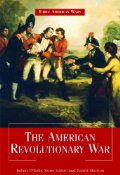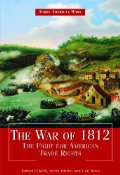
Early American War Series: Rosen Publishing
Rosen Publishing and Britannica have collaborated to produce some exceptional high school history books. The books are identified as being at a 10th grade reading level and 9-12 interest level. Presumably that means they would be appropriate for all high school students, depending upon their reading ability and background knowledge.
The books are not “dumbed down.â€Â The vocabulary requires a decent familiarity with literate English.  Graphics are well placed and augment, rather than distract from the well-written text. There are four titles in the Early American Wars Series: The American Revolutionary War, The War of 1812, Texas War of Independence, and Battle on the Plains. All are well written and interesting.
 |
 |
 |
 |
This reviewer can confidently recommend them to any individual or institution seeking historically accurate texts devoid of both cant and political bias.
The American Revolutionary War by Daniel Marston
Marston makes the case that the popular belief that it was the colonists’ use of guerrilla tactics that enabled them to prevail against British troops is incorrect. Although unconventional methods were used on occasion, it was not until Washington’s Army was trained with the same military techniques and discipline as their British and Hessian adversaries that the tide of battle turned. There were, of course, other factors, but the training provided by Baron von Steuben and the Marquis de Lafayette proved invaluable.
The accounts of the various campaigns and descriptions of the individuals involved are thorough but not tedious. Marston provides sufficient background to make sense of geopolitical influences.
If I had a quibble it was that the introductory remarks never mention King George III, the colonists’ repeated appeals to him, or that the colonists were initially protecting their rights as Englishmen. However, upon reflection, these omissions may be explained by the author’s assumption that high school students have sufficient background knowledge that more than a cursory introduction is unnecessary. As is the case with the other titles in the series, the author provides a chronology at the beginning of the book.
The War of 1812 by Carl Benn
For two and a half years, Americans fought the British, Canadian colonists, and indigenous peoples. In this account of that unfortunate conflict, students will learn why it is a largely forgotten war in America, but one remembered with pride by our neighbors to the north.
Benn covers the war’s political and commercial origins, its battles and the war’s consequences. As in the other volumes in this series, handsome illustrations and informative maps augment the text.
Texas War of Independence by Alan C. Huffines
In many ways this is the liveliest and most captivating book of the series. The colorful cast of characters is a contributing factor. Thanks to Hollywood, the names on the American side – Stephen Austin, Sam Houston, James Bowie – should be at least familiar to most if not all students.
A brief history of revolutionary Mexico provides a not so well known background for the war. Huffines chronicles the outbreak of the war in 1835, the Battle of the Alamo, and the Battle of San Jacinto in 1836 where Texas independence was won and the United States annexation of Texas 1844. The book also includes many little known but fascinating details including a portrait of a real Mexican soldier, and the story of Angelina Dickenson, the baby who survived the battle of the Alamo.
As is the case with the other three books, the book includes a glossary of terms specific to the subject that may be unfamiliar to students.
Battle on the Plains by Charles M. Robinson
This is an excellent history of tribal clashes on the Northern and Southern Plains that both predated the coming of Europeans and that occurred between the tribes and whites. Plains Indians were warriors and fighting with each other was a way of life. Robinson explains that recruitment by foreign powers to settle scores with other nations as well as other factors influenced how the tribes chose their allies.
The two major military engagements against whites – the Red River War of 1874-75 and the Great Sioux War of 1876-7, give the book its title. The book also covers the events that precipitated the bloodshed and spelled the end of Indian independence.
Shifting Federal policies and jurisdictions that attempted to deal with displaced native populations exacerbated relations with the Indians. Even the best-intentioned policies had negative consequences when altruism was misunderstood as weakness. This led to predictable consequences.
Later chapters describe court rulings that gave Native Americans protection under the 14th Amendment and made them wards of the government. Finally, the last chapter includes an even-handed discussion of the enduring problems faced by the United States and other countries dealing with the aftermath of displacing indigenous cultures.
This book, like the other three in the series, includes suggestions for obtaining more information and book lists for additional reading.
Students can learn a great deal from these well-written, accurate  and interesting books. Teachers also may find them rewarding.
 The posts are coming!
The posts are coming!

0 comments
Kick things off by filling out the form below.
Leave a Comment